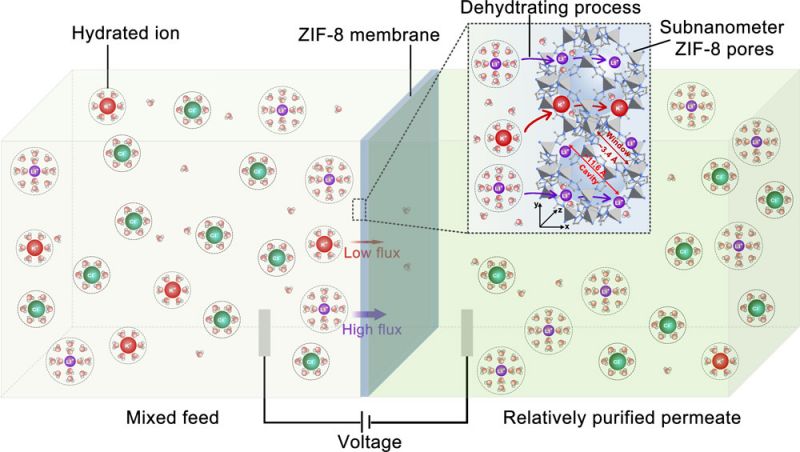Metal Organic Framework (MOFs) Membranes
Published on by Water Network Research, Official research team of The Water Network in Academic
Chemical engineering team helps find an efficient and sustainable way to filter salt and metal ions from seawater.

Source: Monash
With two billion people worldwide lacking access to clean and safe drinking water, joint research by Monash University, CSIRO and The University of Texas at Austin published today in Sciences Advances may offer a breakthrough new solution.
It all comes down to metal-organic frameworks (MOFs), an amazing next generation material that have the largest internal surface area of any known substance. The sponge like crystals can be used to capture, store and release chemical compounds. In this case, the salt and ions in sea water.
Dr Huacheng Zhang, Professor Huanting Wang and Associate Professor Zhe Liu and their team in Chemical Engineering, in collaboration with Dr Anita Hill of CSIRO and Professor Benny Freeman of the McKetta Department of Chemical Engineering at The University of Texas at Austin, have recently discovered that MOF membranes can mimic the filtering function, or ‘ion selectivity’, of organic cell membranes.
With further development, these membranes have significant potential to perform the dual functions of removing salts from seawater and separating metal ions in a highly efficient and cost effective manner, offering a revolutionary new technological approach for the water and mining industries.
Currently, reverse osmosis membranes are responsible for more than half of the world’s desalination capacity, and the last stage of most water treatment processes, yet these membranes have room for improvement by a factor of 2 to 3 in energy consumption. They do not operate on the principles of dehydration of ions, or selective ion transport in biological channels, the subject of the 2003 Nobel Prize in Chemistry awarded to Roderick MacKinnon and Peter Agre, and therefore have significant limitations.
In the mining industry, membrane processes are being developed to reduce water pollution, as well as for recovering valuable metals. For example, lithium-ion batteries are now the most popular power source for mobile electronic devices, however at current rates of consumption, there is rising demand likely to require lithium production from non-traditional sources, such as recovery from salt water and waste process streams. If economically and technologically feasible, direct extraction and purification of lithium from such a complex liquid system would have profound economic impacts.
These innovations are now possible thanks to this new research. Professor Huanting Wang said, “We can use our findings to address the challenges of water desalination. Instead of relying on the current costly and energy intensive processes, this research opens up the potential for removing salt ions from water in a far more energy efficient and environmentally sustainable way.”
“Also, this is just the start of the potential for this phenomenon. We’ll continue researching how the lithium ion selectivity of these membranes can be further applied. Lithium ions are abundant in seawater, so this has implications for the mining industry who current use inefficient chemical treatments to extract lithium from rocks and brines. Global demand for lithium required for electronics and batteries is very high. These membranes offer the potential for a very effective way to extract lithium ions from seawater, a plentiful and easily accessible resource.”
Building on the growing scientific understanding of MOFs, CSIRO’s Dr Anita Hill said the research offers another potential real-world use for the next-generation material. “The prospect of using MOFs for sustainable water filtration is incredibly exciting from a public good perspective, while delivering a better way of extracting lithium ions to meet global demand could create new industries for Australia,” Dr Hill said.
The University of Texas in Austin Professor Benny Freeman says, “Produced water from shale gas fields in Texas is rich in lithium. Advanced separation materials concepts, such as this, could potentially turn this waste stream into a resource recovery opportunity. I am very grateful to have had the opportunity to work with these distinguished colleagues from Monash and CSIRO via the Australian-American Fulbright Commission for the U.S. Fulbright Distinguished Chair in Science, Technology and Innovation sponsored by the Commonwealth Scientific and Industrial Research Organization (CSIRO).”
Source: Monash Univesity
Media
Taxonomy
- Treatment
- Treatment Methods
- Filtration
- Filtration
- Sea Water Filtration
- Membrane Filtration
- Sea Water Desalinisation
- water treatment
- Membrane distillation